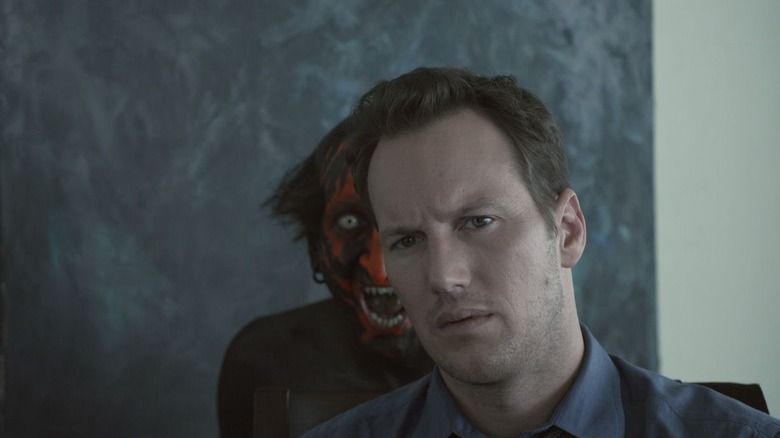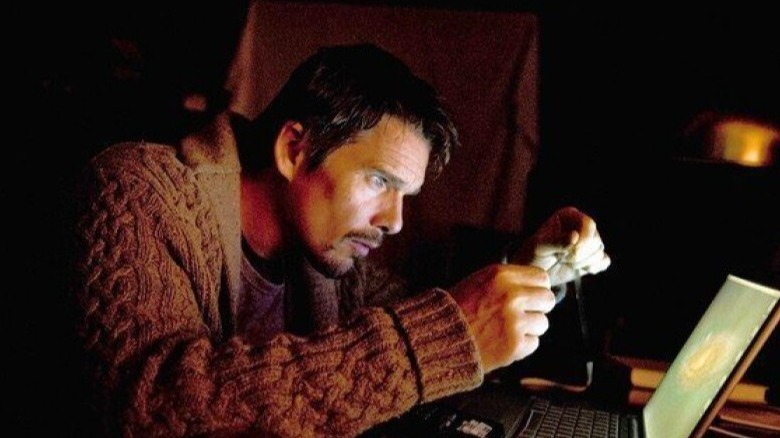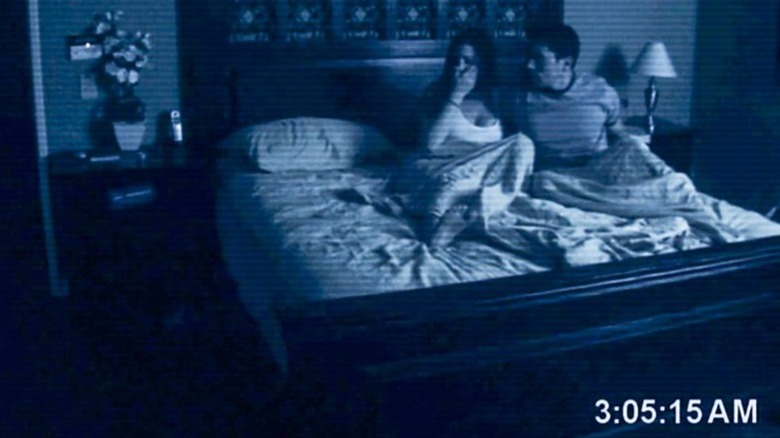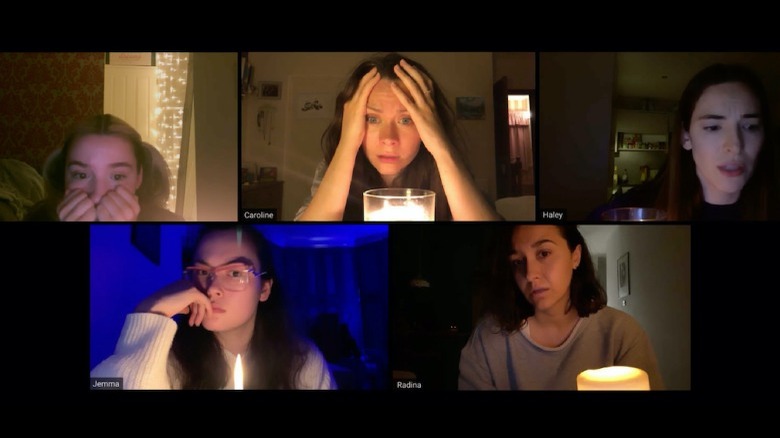The Scariest Horror Film Of All Time According To Science
As audiences, we know what scares us, but it's still nice to have some official validation when we're defending our decision to sleep with the lights on. Viewers who are terrified of a select few horror films now have that validation, thanks to a study called the "Science of Scare Project."
The Science of Scare Project was conducted by a platform called broadbandchoices, which measured viewers' heart rates via BPM as they sat through a selection of scary movies. Researchers determined viewers' resting heart rates, then measured for both new averages and momentary BPM spikes throughout the films.
Scientists Are Studying What Scares Us
The 2020 project sounds like both a legitimate scientific study and an all-around fun time for horror-loving participants. According to an infographic shared by Forbes, a panel of 50 participants were fitted with heart rate monitors and subjected to a total of 50 horror films, all screened in 5.1 surround sound. The films were curated based on a mix of critical favorites and Reddit recommendations, and include classics like "The Shining," "The Thing," and "Halloween," along with plenty of newer horror hits.
According to the results of this scientific study, no other horror movie got hearts pumping like Scott Derrickson's 2012 film "Sinister." The Ethan Hawke-led film follows a true crime writer who moves his family to a house that was the scene of multiple murders, and soon becomes enraptured by a box of apparent snuff films he finds in the attic. "Sinister" is overwhelmingly unsettling, from the moment it opens on Super 8 footage of a family eerily swinging from a hanging tree, down to its last-second jump scare. I'm no scientist, but I had to pause "Sinister" several times to calm down despite my high tolerance for horror. That the film, which was a box office success and earned a sequel, is considered among the scariest of all time is no surprise.
21st Century Films Top The List
"Sinister" narrowly beat out James Wan's new classic "Insidious" for the number one spot in the study's ranked results. While "Sinister" raised viewers' resting heart rates 32% on average, "Insidious" cornered the market on jump scares. Participants watching "Insidious" saw their heart rates spike to 133 BPM during the film's moment of highest anxiety. Want to bet it was during the shot of the infamous red-faced demon?
There are a few surprises among The Science of Scare Project's results. Other 21st century favorites, including "Hereditary," "Paranormal Activity," and "It Follows," are included among the 10 biggest scarers, but so is M. Night Shyamalan's horror-comedy "The Visit." Meanwhile, the first pre-2000 horror movie ranks at #13. "A Nightmare On Elm Street" barely beat out two other classics, "Halloween" and "The Texas Chainsaw Massacre," raising heart rates 12 BPM above average.
The Scariest Movie Has Already Been Dethroned
According to their website, The Science of Scare Project is still ongoing. In 2021, they did the same test, only with 250 participants and a slate of 40 films including several recent releases. In fact, a new release already dethroned "Sinister" in the project's latest batch of results. Rob Savage's "Host," a quarantine-set horror film taking the structure of a Zoom hangout, raised viewers' heart rates 24 BPM on average, while "Sinister" and "Insidious" came in second and third place with a 22 and 21 BPM difference, respectively.
Researchers' attempts to stay on the cutting edge of horror mean that some classics that made The Science of Scare hall of fame during the project's first round are not represented in the newer set of results. Classics like "Scream" and "The Orphanage" did not crack the top 30 among the larger 2021 study. Meanwhile, new crowd-pleasers like Leigh Whannell's "The Invisible Man" and John Krasinski's "A Quiet Place Part II" got hearts pumping, coming in at number 26 and number 8 on the list, respectively. One of the most noteworthy new entries is "Terrified," a seriously freaky Argentinian film about paranormal experiences that climbed all the way to number 6.
As a horror fan, I would love it if this study kicked off a trend of scientific research related to horror. It would be awesome to see how different viewers with different levels of exposure react to the genre. Is a movie scarier if you go into it knowing little about it, or with high expectations? Are non-horror-fans more easily scared, or do downright freaky films like "Sinister" scare seasoned genre veterans just as much as genre newcomers? Hopefully we'll get answers to these questions in the future. For now, you can at least tell your hardcore horror friends you have a highly scientific reason to continue putting off watching "Hereditary."



